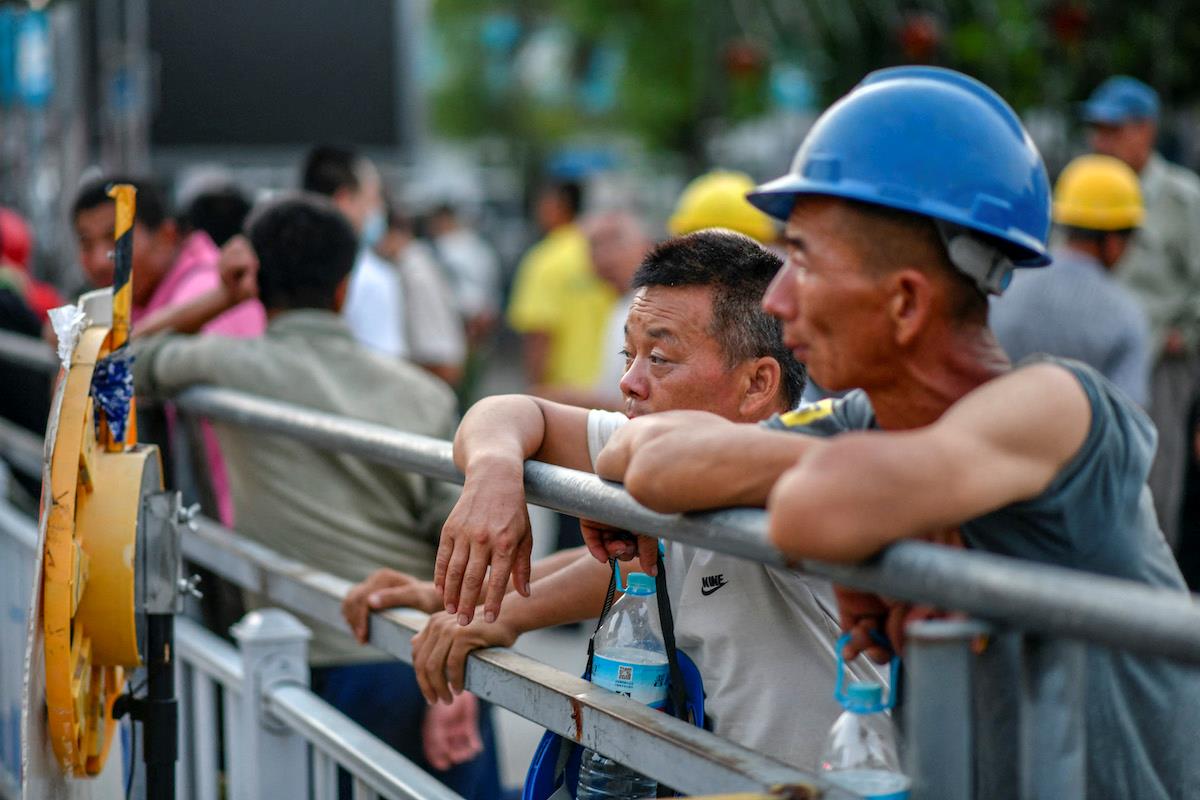(MENAFN- Asia Times) China's aging population presents many challenges for its economy, including a shrinking workforce and increased pressure on the healthcare and pension systems.
It also further complicates China's aspirations to shift towards a consumption-driven growth model, as older individuals tend to save more and spend less compared to those in younger generations.
In response to this demographic shift , the Chinese government is moving forward with its plan to gradually raise the legal retirement age. But without addressing the pervasive issue of age-based discrimination in the workplace, raising the retirement age alone may have a limited impact on retaining older workers.
There is extensive age-based discrimination against older workers in both the public and private sectors in China. The Chinese government's annual recruitment of civil servants only considers applicants under the age of 35 - a practice that is permitted by law . Many corporate job postings also explicitly state a preference for applicants under the age of 35.
This practice is particularly widespread in the tech industry , where age discrimination is reportedly a significant issue in both hiring and firing. Recent media reports indicate that the trend worsened in 2022, with a record number of fresh college graduates entering the job market and exacerbating the already rampant ageism in hiring.
Age discrimination in China's workforce is a fairly recent development, as the loosening of state control over the market in the past decades has given employers greater latitude to discriminate against older workers.
In a competitive economic environment, employers often view younger workers as more productive, innovative and able to work longer hours than their older counterparts.
But these perceptions are poorly supported by empirical evidence. In reality, individual labor productivity typically reaches its peak mid-career as a person gains experience.

Migrant workers in Jinan, Shandong province, August 2, 2021. Photo: Wang Feng / Imaginechina via AFP
Age is also not a significant factor in explaining innovation - other factors such as education play a more crucial role. Working longer hours does not necessarily result in better performance and can even increase health insurance costs for employers.
Employers may also be hesitant to hire workers over the age of 35 because older employees can be more expensive to hire. While it is reasonable for a more experienced worker to receive a higher salary, older workers may be paid a seniority wage premium that exceeds their actual value.
This was particularly true during the planned economy of the Maoist era, but the introduction of economic liberalization has significantly reduced the earnings premium associated with seniority in the workforce. Currently, wages in the private sector generally reflect a worker's economic productivity rather than their tenure.
Ageism in employment also compounds the issue of gender discrimination against working women in China. Women over the age of 35 often have greater caring responsibilities and are subject to various forms of discrimination in the workplace as a result. This discrimination includes pay cuts during maternity leave and the risk of being replaced by younger employees.
A survey conducted by the Social Investigation Center of China Youth Daily found that 86% of the nearly 2000 white-collar professionals surveyed believed that career opportunities sharply decline for women in the workforce after the age of 30. Many women of childbearing age leave the workforce in the middle of their careers, only to find it difficult to re-enter the labor market.
Putting an end to ageist practices in employment could benefit the Chinese economy by enhancing labor market efficiency and mitigating the impact of China's demographic decline. Removing discriminatory barriers to employment will allow more workers to access job opportunities.
With the average years of education among China's working-age population increasing, discriminatory employment practices based on age will lead to a significant loss of human capital in the future. While an education gap still exists across age groups, China should find ways to recapitalize on its aging labor force by providing older workers with more retraining opportunities.

An elderly woman takes a selfie as Chinese President Xi Jinping's speech is being broadcasted on a large screen in Beijing during the 100th Anniversary of the founding of the Communist Party of China, July 1, 2021. Photo: AFP / Noel Celis
President Xi Jinping emphasized the significance of removing discriminatory barriers to equal employment in his address at the 20th National Party Congress in 2022.
To tackle pervasive age-based discrimination in the workplace, the Chinese government needs to take immediate measures to end ageism in its civil service hiring practices. Corporate employers may not recognize the harm in implementing discriminatory policies if the government is also doing so.
The government should consider making ageism in employment illegal and enforce this with penalties. After all, ageism in employment hurts not only individual workers but also the economy as a whole.
Tianlei Huang is Research Fellow and China Program Coordinator at the Peterson Institute for International Economics.
This article , republished with permission, was first published by East Asia Forum, which is based out of the crawford school of public policy within the college of asia and the pacific at the australian national university .